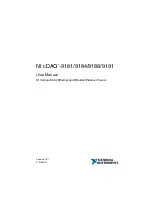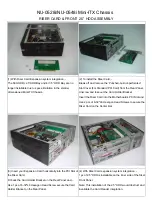
For more information, see the
Installing the Bottom-Support Rails on the Rack, on page 4
.
To prevent bodily injury when mounting or servicing this unit in a rack, you must take special precautions
to ensure that the system remains stable. The following guidelines are provided to ensure your safety:
• This unit should be mounted at the bottom of the rack if it is the only unit in the rack.
• When mounting this unit in a partially filled rack, load the rack from the bottom to the top with the
heaviest component at the bottom of the rack.
• If the rack is provided with stabilizing devices, install the stabilizers before mounting or servicing the
unit in the rack. Statement 1006
• Cisco Nexus 7018 chassis and its components are accounted for and undamaged.
For more information, see the
Unpacking and Inspecting a New Chassis, on page 3
Required Tools and Equipment
You need the following tools and equipment to install the Cisco Nexus 7000 Series chassis:
• Mechanical lift capable of lifting 700 pounds (318 kg)
You must use a mechanical lift to lift a switch weighing over 120 pounds (55 kg).
Caution
Depending on the number of modules installed in the switch, you can minimize the amount of weight that
you need to move. You can also remove the fan trays before moving the chassis. To determine the full weight
of the switch switch chassis that you are moving, see
Note
• Number 1 Phillips-head torque screwdriver
Although manual torque screwdrivers are recommended, the screwdriver used (whether manual or powered),
must be able to be set for the torque settings specified in these instructions.
Note
Do not use magnetic heads on the screwdriver.
Caution
• Bottom-support rails kit (shipped with the Cisco Nexus 7018 accessory kit)
Part of this kit has already been used to install the bottom-support rails.
Table 2: Contents for the Rack-Mount
lists the items in the rack-mount kit.
Installing a Cisco Nexus 7018 Chassis
8
Installing a Cisco Nexus 7018 Chassis
Required Tools and Equipment









































